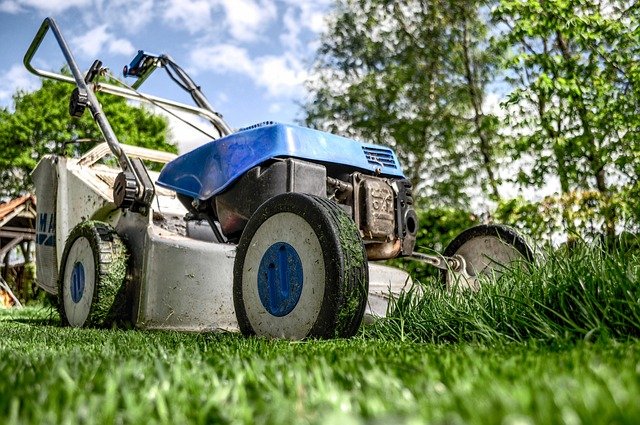Your Complete Guide to Garden Shredders in 2025
Garden shredders have become essential tools for modern gardeners looking to manage yard waste efficiently while creating valuable resources for their gardens. These powerful machines transform branches, leaves, and other organic debris into useful mulch and compost materials, helping you maintain a healthier garden ecosystem while reducing waste disposal costs.

How to Choose the Right Garden Shredder for Your Needs
Selecting the perfect garden shredder depends on several key factors. First, consider the size of your property and the volume of waste you typically generate. Small gardens with occasional pruning needs work well with electric shredders, which handle branches up to 1.5 inches in diameter. Larger properties with regular tree maintenance require gas-powered models capable of processing branches up to 3 inches thick.
The type of cutting mechanism also matters significantly. Impact flail systems work excellently for soft materials like leaves and small twigs, while blade-based systems handle woody materials more effectively. Self-feeding models reduce manual effort by automatically pulling material through the cutting chamber, making them ideal for users who process large volumes regularly.
How to Use Shredded Material for Composting
Shredded garden waste creates an excellent foundation for successful composting. The smaller particle size produced by garden shredders accelerates decomposition by increasing surface area exposure to beneficial microorganisms. Mix shredded woody materials with nitrogen-rich green waste like grass clippings and kitchen scraps to maintain proper carbon-to-nitrogen ratios.
Layer your shredded materials in alternating brown and green layers, ensuring adequate moisture and regular turning for optimal results. Shredded leaves and small branches typically decompose within 3-6 months when properly managed, compared to whole materials that may take years to break down naturally.
How to Improve Garden Health with Shredded Mulch
Shredded mulch provides numerous benefits for garden health and plant development. Applied around trees, shrubs, and flower beds, shredded organic matter helps retain soil moisture, reducing watering requirements by up to 30%. This natural covering also suppresses weed growth by blocking sunlight from reaching weed seeds.
As shredded mulch decomposes gradually, it enriches soil with organic matter and essential nutrients. The improved soil structure enhances root development and increases beneficial microbial activity. Apply shredded mulch in 2-3 inch layers, keeping material several inches away from plant stems to prevent pest issues and crown rot.
Shredder Blade Maintenance and Sharpening Tips
Proper blade maintenance ensures optimal shredder performance and extends equipment lifespan significantly. Inspect blades regularly for chips, cracks, or excessive wear that reduces cutting efficiency. Most shredder blades require sharpening or replacement after 20-40 hours of operation, depending on material types processed.
When sharpening blades, maintain the original angle and ensure balanced weight distribution to prevent vibration issues. Many manufacturers recommend professional sharpening services for best results, though basic maintenance like cleaning debris and checking mounting bolts can be performed by users. Always disconnect power sources and follow safety protocols when performing any maintenance tasks.
Best Garden Shredders for 2025
The current market offers diverse options across different price ranges and performance levels. Electric models from established manufacturers provide reliable performance for residential use, while commercial-grade gas units deliver superior power for demanding applications.
| Model Type | Manufacturer | Key Features | Price Range |
|---|---|---|---|
| Electric Compact | Sun Joe | 15-amp motor, 1.73” capacity | $150-200 |
| Electric Heavy-Duty | Earthwise | Collection bag, overload protection | $200-300 |
| Gas-Powered | Champion Power | 3” capacity, self-feeding | $800-1,200 |
| Professional Gas | Earthquake | Commercial engine, large hopper | $1,500-2,000 |
Prices, rates, or cost estimates mentioned in this article are based on the latest available information but may change over time. Independent research is advised before making financial decisions.
Consider factors like warranty coverage, local service availability, and replacement parts accessibility when making your selection. Many retailers offer seasonal promotions during spring and fall months when demand typically peaks.
Maximizing Your Garden Shredder Investment
To get the most value from your garden shredder, develop a regular maintenance schedule and proper storage practices. Clean equipment thoroughly after each use, removing all organic debris that could cause corrosion or pest issues. Store shredders in dry locations and perform seasonal maintenance including oil changes, air filter replacement, and spark plug inspection for gas models.
Understanding your shredder’s capabilities and limitations prevents damage while ensuring safe operation. Never attempt to process materials exceeding manufacturer specifications, and always wear appropriate safety equipment including eye protection, hearing protection, and sturdy footwear.
Garden shredders represent a valuable investment for serious gardeners committed to sustainable yard waste management. By choosing the right model for your needs and maintaining it properly, you’ll enjoy years of reliable service while creating valuable resources that enhance your garden’s health and productivity. The combination of reduced waste disposal costs and improved garden performance makes these tools increasingly essential for modern gardening practices.




